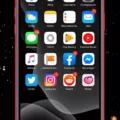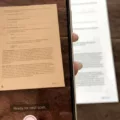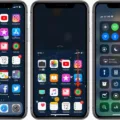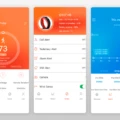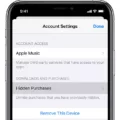FaceTime is a popular video calling app developed by Apple, allowing users to make audio and video calls with other Apple device users. It provides a convenient way to connect with friends, family, and colleagues, especially in situations where physical meetings are not possible. One useful feature of FaceTime is the ability to keep track of your call history, which includes a list of recent FaceTime calls you have made, received, or missed.
To access your FaceTime call history, simply open the FaceTime app on your iPhone or iPad. If you can’t find the app on your home screen, you can swipe all the way to the left and type ‘FaceTime’ into the search bar. Once you open the app, you will see a list of recent FaceTime calls, including the date, time, and duration of each call.
Sometimes, you may accidentally delete your FaceTime call history and wonder if there is a way to recover it. Fortunately, Apple provides a couple of options for recovering deleted call history. One option is through iCloud backup. If you have enabled iCloud backup on your device, your FaceTime call history should be included in the backup. To restore your call history from iCloud, you can go to Settings > General > Reset > Erase All Content and Settings. After erasing your device, you can set it up again and choose the option to restore from iCloud backup. This should restore your FaceTime call history along with other data.
Another option for recovering deleted FaceTime call history is through iTunes backup. If you regularly back up your device using iTunes, your FaceTime call history should be included in the backup. To restore your call history from iTunes, you need to connect your device to your computer and open iTunes. Click on the device icon in the upper left corner of the iTunes window, then click on “Restore Backup.” Choose the backup that contains your FaceTime call history and click “Restore.” This should restore your call history to your device.
It’s important to note that restoring from a backup will replace your current data with the data from the backup. Therefore, it’s recommended to create a backup of your current data before proceeding with the restore process.
FaceTime call history provides a convenient way to keep track of your audio and video calls made through the app. In case you accidentally delete your call history, you can recover it using iCloud or iTunes backup. Both methods allow you to restore your FaceTime call history along with other data on your device. Remember to regularly backup your device to ensure you can recover any lost data, including your FaceTime call history, in the future.
Can You See Your FaceTime History?
You can view your FaceTime history by following these steps:
1. Open the FaceTime app on your device. If you can’t locate the app on your home screen, swipe all the way to the left and enter “FaceTime” into the Search bar.
2. Once the app is open, you will be presented with a list of recent FaceTime calls. This list displays both incoming and outgoing calls, as well as missed calls.
3. The FaceTime history is organized in chronological order, with the most recent calls appearing at the top of the list. Each entry includes the name or phone number of the contact you communicated with, as well as the date and time of the call.
4. If you tap on a specific call entry, you will be provided with additional information, such as the duration of the call and the type of call (video or audio).
5. To initiate a FaceTime call with a contact from your history, simply tap on their name or phone number. This will bring up the call interface, allowing you to choose between an audio or video call.
In summary, to access your FaceTime history, open the FaceTime app on your device, where you can view and interact with a list of recent calls, including details such as contact names, call dates, times, and durations.
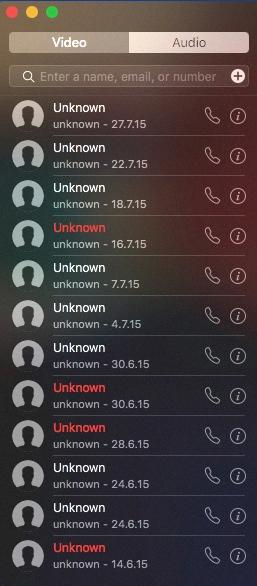
Can You Retrieve FaceTime Call Logs?
It is possible to retrieve FaceTime call logs on Apple devices. There are a few methods you can try to retrieve your FaceTime call history:
1. iCloud Backup: If you have enabled iCloud backup on your device, your FaceTime call history may be included in the backup. To check if you have a backup available, go to “Settings” > “[Your Name]” > “iCloud” > “Manage Storage” > “Backups”. If you have a backup with FaceTime data, you can restore your device from that backup to retrieve your call history.
2. iTunes Backup: If you have backed up your device using iTunes, your FaceTime call history may also be included in the backup. Connect your device to your computer and open iTunes. Select your device, go to the “Summary” tab, and click on “Restore Backup”. Choose the backup that contains your FaceTime data to restore your device and retrieve the call history.
3. Third-Party Software: There are third-party software options available that claim to be able to recover FaceTime call logs from your device. These tools may require you to connect your device to a computer and run the software to scan for and recover the call history. Some popular options include iMobie PhoneRescue, Dr.Fone, and iMyFone D-Back.
4. Contact Apple Support: If none of the above methods work, you can reach out to Apple Support for further assistance. They may be able to provide additional solutions or guide you through the process of recovering your FaceTime call logs.
Note: It’s important to keep in mind that the success of these methods can vary depending on various factors such as the backup availability, the software used, and the specific device and operating system version you have. It’s always recommended to regularly back up your device to avoid losing important data like call history in the future.
How Do You Delete FaceTime History?
To delete your FaceTime history, you can follow these steps:
1. Open the FaceTime app on your device.
2. In the bottom toolbar, tap on the “Recents” tab. This will display a list of your recent FaceTime calls.
3. To remove a specific call from your history, simply control-click (or right-click) on the call you want to delete. A menu will appear.
4. From the menu, select “Remove from Recents.” This will remove the selected call from your FaceTime history.
If you want to remove all of your recent FaceTime calls at once, you can do the following:
1. Open the FaceTime app on your device.
2. In the bottom toolbar, tap on the “Recents” tab to view your recent calls.
3. On the top right corner of the screen, you’ll see an option that says “Edit.” Tap on it.
4. Now you’ll see a red minus sign (“-“) next to each call. Tap on the minus sign for each call you want to delete. This will highlight the call.
5. Once you have selected all the calls you want to delete, look for a “Delete” button (usually located at the top left or right corner of the screen) and tap on it.
6. A confirmation prompt will appear asking if you want to delete the selected calls. Tap on “Delete” to confirm. This will remove all the selected calls from your FaceTime history.
By following these steps, you can easily delete specific or all FaceTime calls from your history, allowing you to keep your call log organized and private.
Conclusion
The FaceTime app on your Apple device provides a convenient and efficient way to make video and audio calls. The app keeps a log of your FaceTime call history, which includes a list of recent calls made, answered, or missed. This call history can be accessed easily on your iPhone or iPad.
If you want to remove a specific call from your FaceTime log, you can simply control-click on the call and choose the option to remove it from the recents list. Alternatively, if you want to clear your entire FaceTime call history, you can choose the option to remove all recents.
It’s important to note that iCloud and iTunes backup are also available options for Apple users to recover their deleted FaceTime call history. This means that even if you accidentally delete a call from your FaceTime log, you may still be able to retrieve it through these backup methods.
The FaceTime call log provides a helpful record of your recent FaceTime activity, allowing you to easily keep track of your calls and manage your call history as needed.

